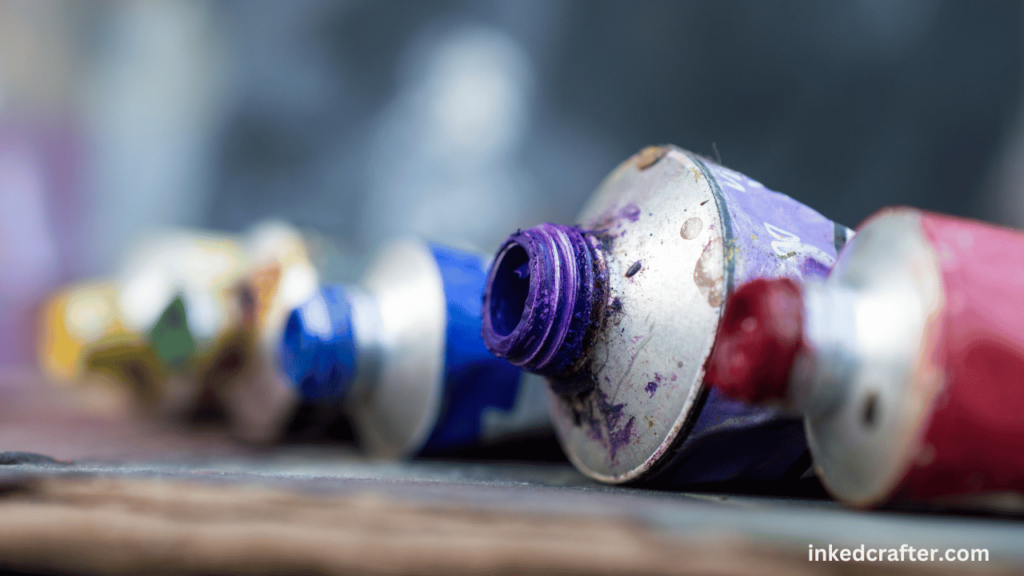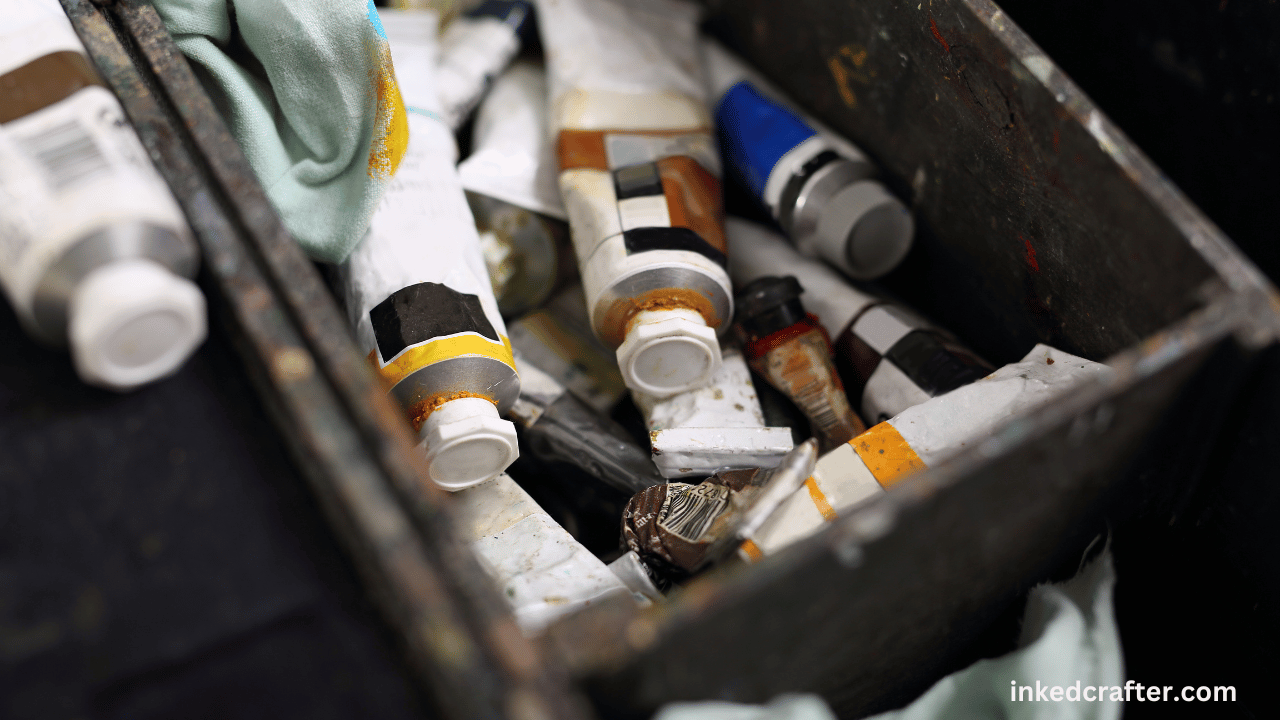Embarking on a journey into the world of painting often begins with a question, particularly for beginners: “Is oil paint toxic?” This inquiry is valid and crucial for ensuring artists’ safety and well-being as they unleash their creativity onto canvas.
Delving into the depths of this topic reveals nuances that deserve exploration to paint a comprehensive picture of the risks and precautions associated with oil paint.

Contents
Unraveling the Composition of Oil Paint
To understand the potential toxicity of oil paint, one must first grasp its composition. Oil paint comprises pigments suspended in drying oils, most commonly linseed oil. These pigments provide the colors that ignite artistic expression,.
While the oil serves as a binder, imparting a smooth texture and enhancing longevity. This dynamic combination forms the foundation of oil paint’s allure, characterized by its richness and depth.
The Intricacies of Toxicity
Delving deeper, toxicity concerns arise primarily from certain chemicals within oil paint. Among these are solvents, utilized to thin the paint and clean brushes.
Typical solvents include turpentine and mineral spirits, which emit fumes that can irritate the respiratory system and induce symptoms such as headaches and dizziness upon prolonged exposure.
Furthermore, the pigments themselves may harbor heavy metals, including lead and cadmium, notorious for their potential health hazards. These metals pose risks of absorption through skin contact or inhalation as dust particles during the mixing and application of paint. Understanding these nuances is pivotal in navigating the realm of oil paint safety.

Mitigating Risks Through Safety Measures
Despite the inherent complexities, mitigating the risks associated with oil paint toxicity is achievable through conscientious safety measures.
Ventilation emerges as a critical factor, with adequate airflow essential for dispersing solvent fumes and minimizing respiratory exposure. To alleviate health concerns, consideration should also be given to alternative, less toxic solvents, such as citrus-based thinners.
Moreover, adopting prudent practices, such as wearing gloves during paint handling and meticulous hand hygiene post-painting, is a barrier against direct skin contact and accidental ingestion. Furthermore, refraining from eating, drinking, or smoking in the vicinity of painting activities reduces the risk of exposure to harmful substances.
Conclusion
In essence, while the question of oil paint toxicity may elicit apprehension, enlightenment through understanding empowers artists to navigate this terrain with confidence.
By embracing precautionary measures and cultivating awareness of potential risks, individuals can pursue their artistic endeavors with a steadfast commitment to creativity and well-being.
Thus, armed with knowledge and equipped with safety measures, artists embark on a journey where self-expression flourishes alongside conscientious stewardship of health—a harmonious fusion that ensures the vibrant strokes of creativity endure, unmarred by the shadows of uncertainty.
FAQs
-
Is oil paint toxic to breathe?
While oil paint itself is not inherently toxic to breathe, certain components within it, such as solvents used for thinning and cleaning, can emit fumes that may irritate the respiratory system. Proper ventilation is crucial to minimize exposure to these fumes and ensure a safe painting environment.
-
Can oil paint be harmful to the skin?
Oil paint can potentially be harmful to the skin, especially if it contains pigments with heavy metals like lead or cadmium. Direct contact with these substances may lead to skin irritation or absorption of toxins. It’s advisable to wear gloves when handling oil paint and to wash skin thoroughly after painting sessions to reduce the risk of skin exposure.
-
Are there safer alternatives to traditional solvents for oil painting?
Yes, there are alternative solvents available that are less toxic than traditional ones like turpentine or mineral spirits. Citrus-based thinners and vegetable oil are examples of safer alternatives that can be used to thin oil paint and clean brushes without compromising on artistic quality.
-
Can oil paint be harmful if ingested accidentally?
Ingesting oil paint, whether accidentally or intentionally, can pose serious health risks, especially if the paint contains toxic pigments or solvents. It’s essential to keep oil paint and painting materials out of reach of children and pets to prevent accidental ingestion. In case of ingestion, seek medical attention immediately.
-
Are there specific health risks associated with certain colors of oil paint?
Some colors of oil paint may contain pigments with higher levels of toxic metals. For example, paints containing cadmium pigments are known to pose greater health risks. It’s essential to research the pigments used in your oil paints and take appropriate precautions when handling them.








